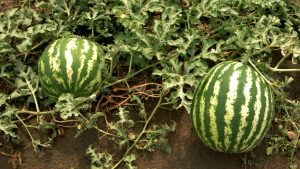By Ashley Robinson
Researchers at the University of Florida Institute of Food and Agricultural Sciences are studying grafted watermelon seedlings because of the advantages they can provide to growers.

The grafted seedlings, an intentional fusion of plant parts, are resistant to fusarium wilt and tolerant to cold temperatures.
“This is kind of an additional tool to use if you do have fusarium issues (or) if you have other abiotic and biotic stresses,” says Sylvia Willis, UF/IFAS Suwannee County agricultural Extension agent. “It’s a way to combat that.”
BENEFITS
According to Willis, grafted watermelon seedlings tend to create a stronger root system, produce a higher crop yield and have better nutrient- and water-use efficiency than traditional watermelon seedlings. She is optimistic about the potential opportunities grafted watermelon could provide for Florida growers.
She says this is an option for growers having production issues. “The alternative is using your non-grafted seedlings and using different chemical applications,” says Willis.
COSTLY
While these fused plant parts are attractive for their benefits, they are not popular for their price. There is a lot of labor that goes into producing grafted watermelon seedlings, which is why they are more expensive than traditional plants.
“The biggest challenge is the money,” says Willis. “We don’t really see a decrease in that going down anytime soon because it hasn’t really been adopted here.”
Grafted watermelon has been used in Europe and Asia for many years, but it is a relatively new concept in the United States. However, it is slowly gaining attraction as some South Florida growers have begun using grafted seedlings.
“There are some growers doing on-farm trials trying to get on board and really jump the gun, but it’s really expensive, so that’s the biggest deterrent,” Willis says.









